Planning home lighting? Read our guide for professionals with all the best practices and many ideas for home lighting.
Lighting in an interior design project is often an underrated but crucial element that can radically transform the look and functionality of any space.
For architects and interior designers, designing a home's lighting is a subtle art that requires not only technical skills, but also a deep understanding of aesthetics and the human experience, and the right balance between form and function, which makes for a truly extraordinary environment.
This guide was created with the aim of providing architects and interior designers with suggestions and ideas to tackle any type of home lighting project effectively.
Based on our experience in the sector, we will talk about the different types of lights and lamps available, and we will provide practical advice on how to create unique atmospheres through lighting.
In particular, we will look at:
- How to design home lighting: the factors to consider
- How to best illuminate a home: 4+1 things to know
- Interior lighting design: what cannot be missing
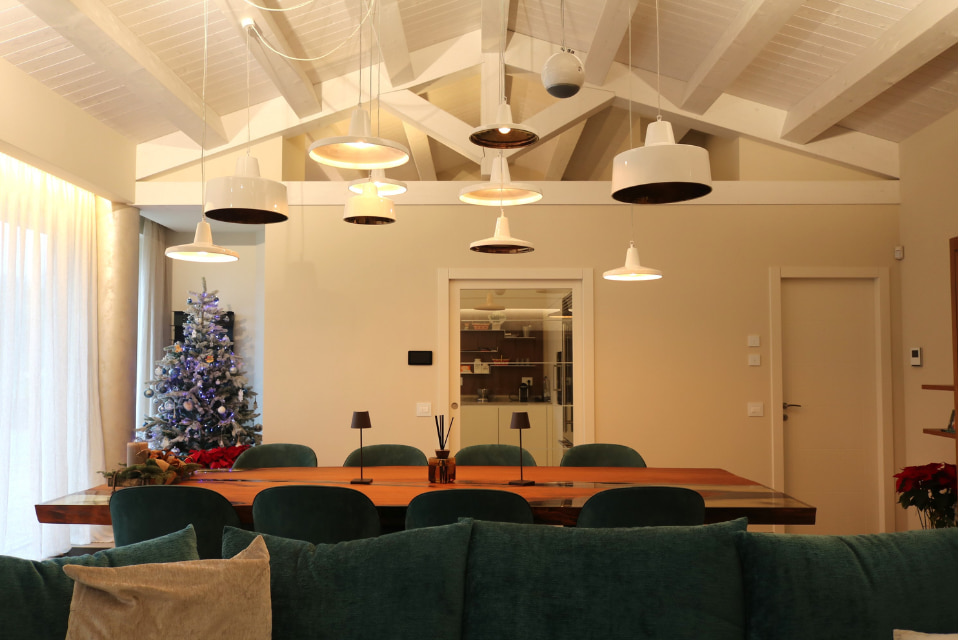
Gangster
How to design home lighting: the factors to consider
We repeat: designing home lighting correctly is essential to creating a welcoming, functional, and aesthetically fascinating environment.
Therefore, interior design professionals must know how to create the right atmosphere through the psychology of light.
Their work in designing interior lighting, in fact, will decisively influence the mood, sensations, and, more generally, the well-being of those who will experience the environment.
As a result, the inadequate use of light can determine the total failure of a project.
With these premises in mind, let's look at the factors to consider when designing home lighting.
- The architectural effect, i.e. how lighting can emphasize architectural details such as exposed beams, high ceilings, feature walls, etc.;
- Purpose and function of light, that is, understanding whether it is general lighting, task lighting for work areas, or accent lighting to highlight works of art or architectural elements;
- The desired atmosphere: this will also determine the choice of color temperature. Warm lights create a welcoming atmosphere, while cold lights are more suitable for work spaces;
- The overall mood of the location: choose interior lamps whose design integrates harmoniously with the furnishings and the overall concept;
- The presence of natural light sources, such as windows and skylights, which must be used to the maximum to obtain the perfect integration between natural light and artificial light.
Taking these factors into account, architects and interior designers can design home lighting optimally, improving both its functionality and aesthetics.
How to best illuminate a home: 4+1 things to know
As we have seen, interior lighting design requires careful planning.
Start with a careful analysis of the home’s various environments and their purpose.
This will allow you to determine the type of lighting needed in each space and calculate how many lumens and watts are needed to illuminate each room.
In fact, as design professionals know well, every room in the house has its own light. In very general terms, in a living area, you need about 200 lux, and for the kitchen 350 lux, while for the bedroom between 100 and 150 lux are sufficient. However, the bathroom has two reference values: a generic one (150 lux) and a specific one for the mirror (400 lux).
To best illuminate a home, you should also introduce lighting control systems, such as dimmers, smart switches, or home automation. This allows you to design flexible illumination, capable of adapting to the specific needs of different moments of the day, as well as save energy.
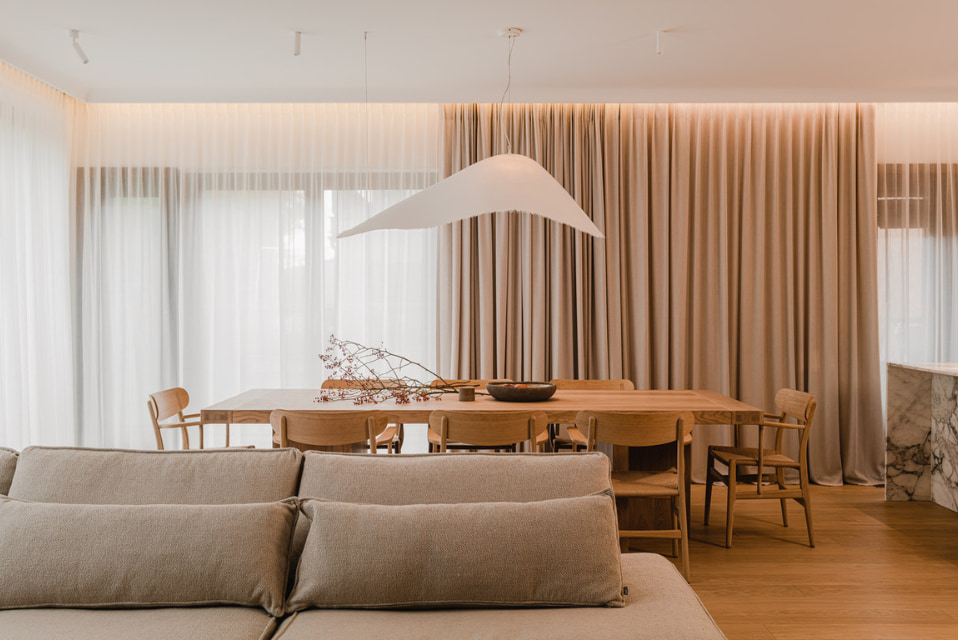
Moby Dick
How many lamps are needed to illuminate a room
The quantity of lamps needed for interior lighting design depends on several factors, including the size of the room, the intended use, and the desired lighting style.
Therefore, there is no universal answer but rather some guidelines to determine the number of lighting fixtures needed to design home lighting.
It is even obvious to say that one of the variables to consider concerns the size of the room. In general, larger rooms require more lamps to ensure uniform lighting.
For example, a ceiling lamp may be sufficient to guarantee an adequate level of ambient lighting in a "standard" sized room, but larger contexts will require additional light sources, even for general lighting.
Other factors to consider are:
- The intended use of the room. For example, a kitchen requires brighter light for work activities, so more light points may be needed than a bedroom;
- The layout of the room and the furniture. For example, table lamps or floor lamps positioned next to sofas or armchairs can provide additional light where needed;
- The lighting style. The choice of the type of interior lighting affects the quantity of lamps needed.
Finally, we should remember the importance of achieving a layered lighting project, using different light sources to create depth and atmosphere.
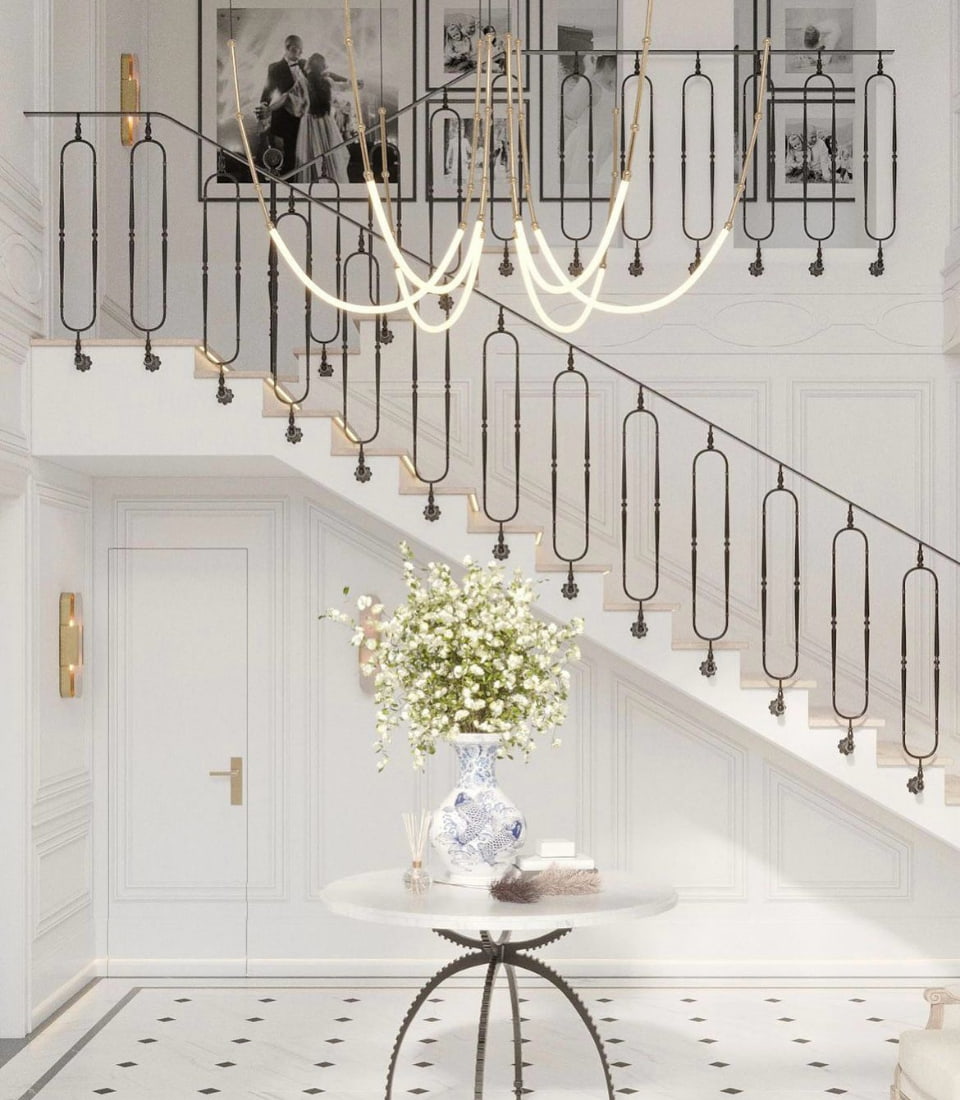
Leda
How to position light points in a home
Determining how to position light points in a home is one of the most crucial challenges of a lighting design project.
First of all, as we have already mentioned, we absolutely must not neglect considering making the most of the presence of natural light.
A fundamental element to evaluate to avoid mistakes is the height of the installations. The objective is to guarantee the right visual comfort without creating an unwanted glare or shadows.
Having made this premise, the right height to place wall lamps is approximately between 190 and 220 cm. This is a general indication that may vary based on the specific role of lighting on a case-by-case basis.
Wall lamps can be positioned, just to give a few examples, along the walls of corridors, above bedside tables in a bedroom as an alternative to table lamps, to provide the right level of task lighting on the sides of the bathroom mirror, or as accent lighting above or below a painting or design object.
With regard to suspension lamps, the recommended height is approximately 2.10 meters from the floor. To establish where to place designer suspension lamps, it is also necessary, in this case, to define their role. For example, to illuminate a dining table, they should be positioned at least 60 cm from the table top.
Suspension lamps are an excellent idea in the center of the ceiling of each room for general lighting, or above an internal staircase to add a touch of style or the kitchen hob.
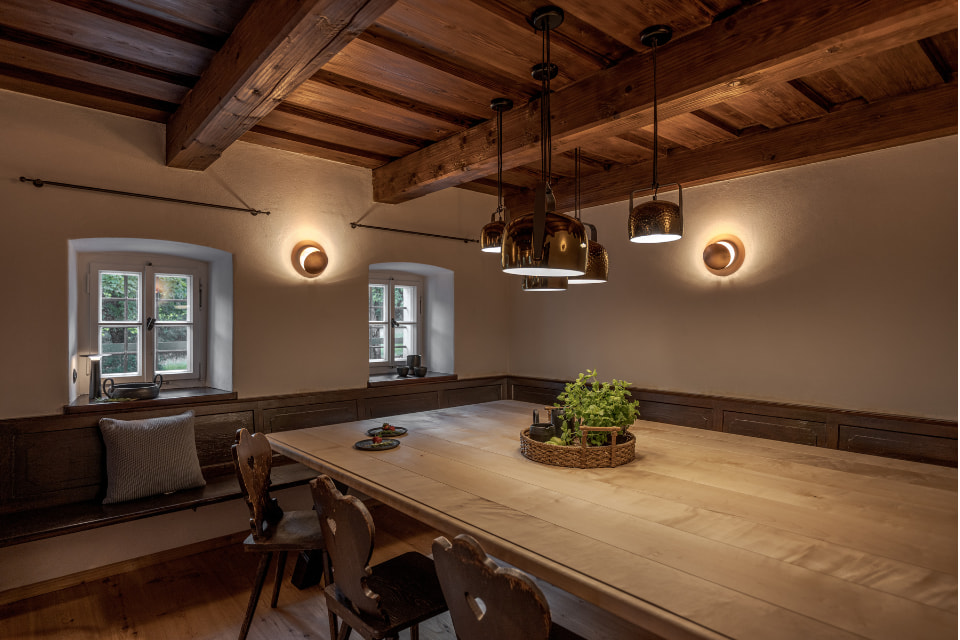
Bag
Which lamps you should use in a home
When designing home lighting, there is a vast universe of possibilities when it comes to choosing which lamps to use.
Not long ago we talked about the choice between a wall lamp or chandelier (or suspensions more generally).
Indoor wall lamps are well suited to illuminating small spaces or rooms with low ceilings, but they also offer the opportunity to create decorative lighting effects or become a source of accent lighting. It is important to consider the direction of the light and the orientation of the lamps to optimize the desired lighting effects.
Suspension lamps, single or in clusters, add a touch of elegance and timeless style to any environment.
When it comes to decorative lighting for the home, you should also take into account the inclusion of other types of lamps in your lighting design project, based on the characteristics of the space, the mood, and the result you want to obtain, such as:
- Ceiling lamps, which can become true works of art capable of redefining our domestic skies;
- Table lamps, ideal for adding light points in specific areas, such as a reading corner in the living area;
- Floor lamps, decorative and functional elements to place in the living room or in a corner of the bedroom, but also to give new life to a forgotten space under the stairs.
In addition to the type and design of the lamps, it will also be fundamental to choose the right color temperature.
A warm light (2,700/3,000 Kelvin) will create an intimate and welcoming atmosphere, while a cold light (4,000 Kelvin) will produce a more energetic and vibrant atmosphere.
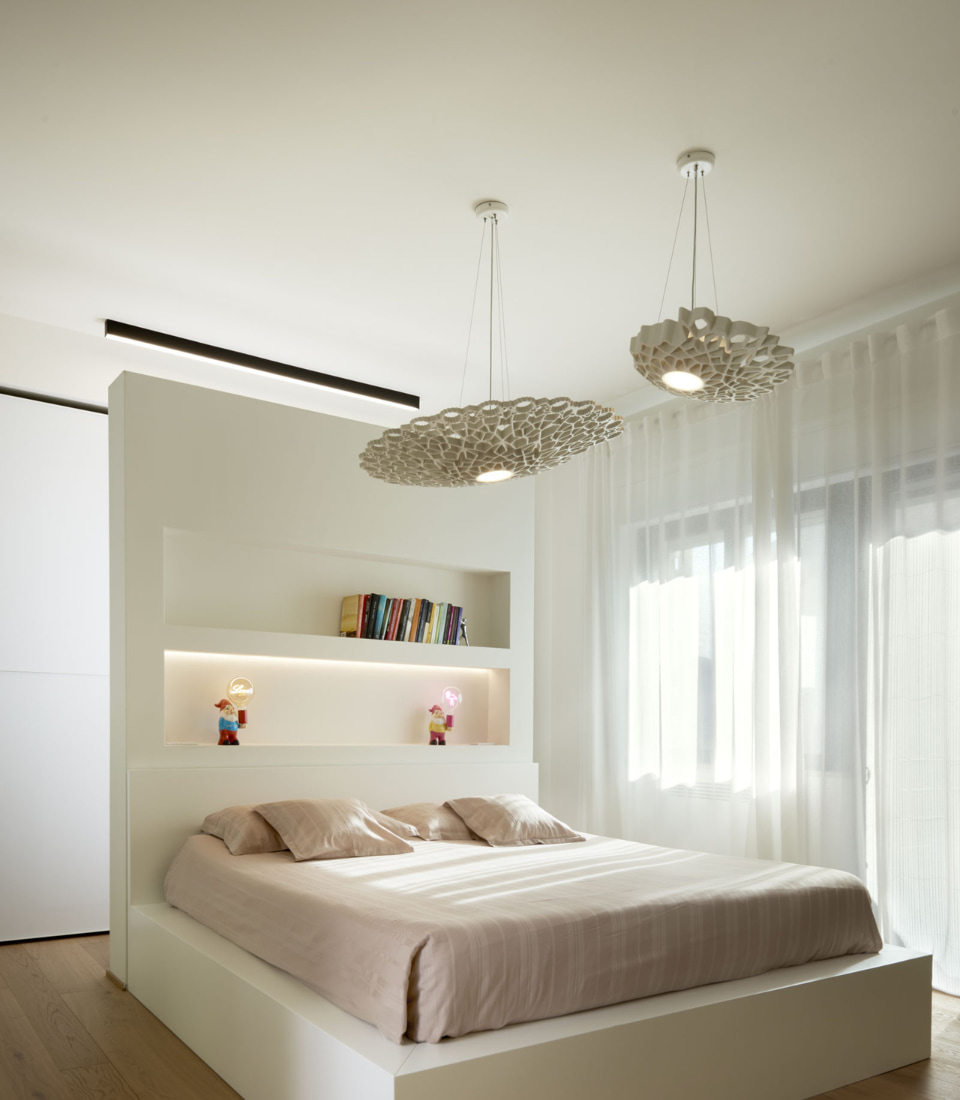
Notredame
How to choose lamps for your home
When choosing interior lamps suitable for the needs of your lighting design project, in addition to all the factors examined so far, it is necessary to consider the aesthetics of the interior lamps.
In addition to the tastes and preferences of the customer, we must not lose sight of the project’s objective and the overall mood of the location.
To design home lighting correctly it is, first of all, necessary to match the lamps with the furnishing style.
It is also essential to select indoor lamps of adequate dimensions. A lamp that is too large can, in fact, overwhelm a space, while one that is too small can seem out of scale.
Finally, you should evaluate the material and the color of the lighting fixtures.
In particular, the different materials used in designer lighting offer aesthetic results but also extremely different techniques.
Just to give a few examples, shiny metal can reflect light dynamically, while matte metal offers more diffused light. The opaline glass, on the other hand, allows the light to be diffused evenly, creating soft and comfortable lighting.
Home lighting ideas with designer lamps
After having provided all the knowledge needed to design home lighting, we want to provide professionals with some home lighting ideas, selected from our collections.
A suspension lamp like Cell, for example, which recalls the structure and spirit of a Chinese lantern, is a romantic cage of light made with a thin white metal thread with a bright linen heart as a lampshade. It will give extreme freshness and lightness positioned in the center of a high ceiling of a prestigious living area somewhere between ancient and modern.
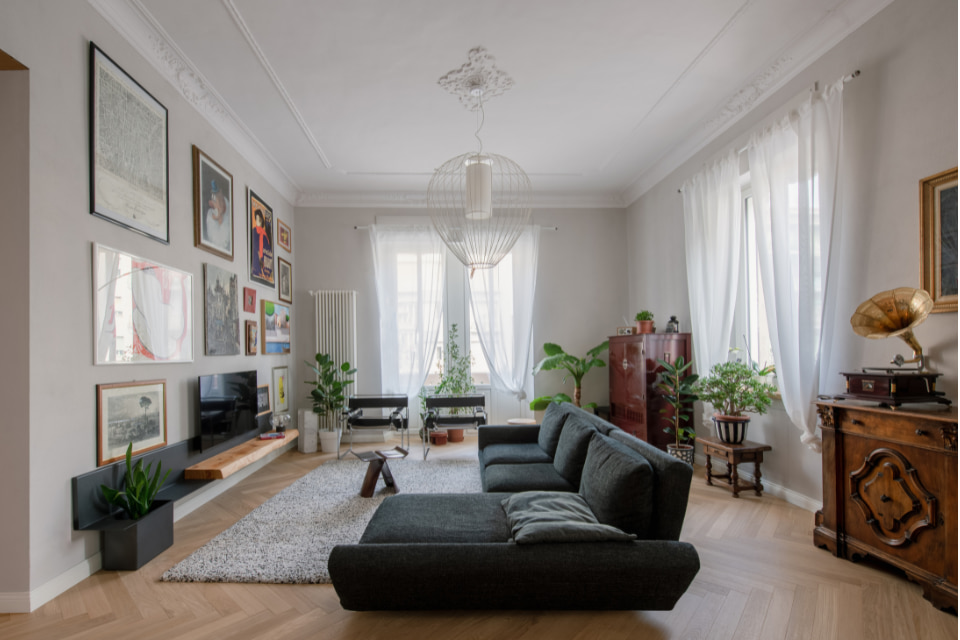
Cell
A collection of modular and flexible light elements, Leda is a chain of light that binds and decorates, in a perfect fusion between technique and aesthetics. In the suspension version, with the matte aluminum structure and matte white silicone diffuser, it will give a modern and unconventional touch to a large entrance that aims to amaze.
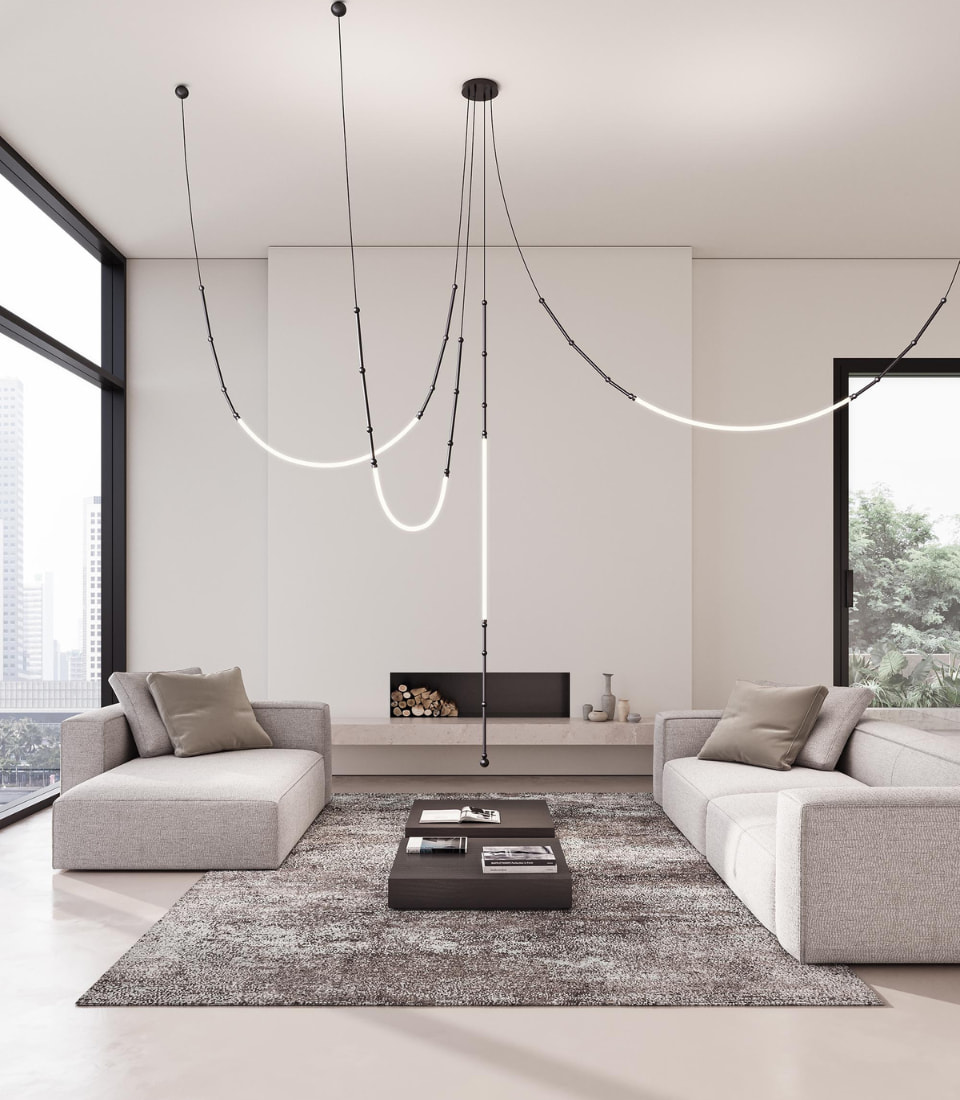
Leda
Like a blade of grass with a drop of dew, Atmosphere is a light and minimal lamp that provides a soft and enveloping light. Furthermore, it is a perfect solution in the floor lamp version to be placed in a corner of the bedroom.
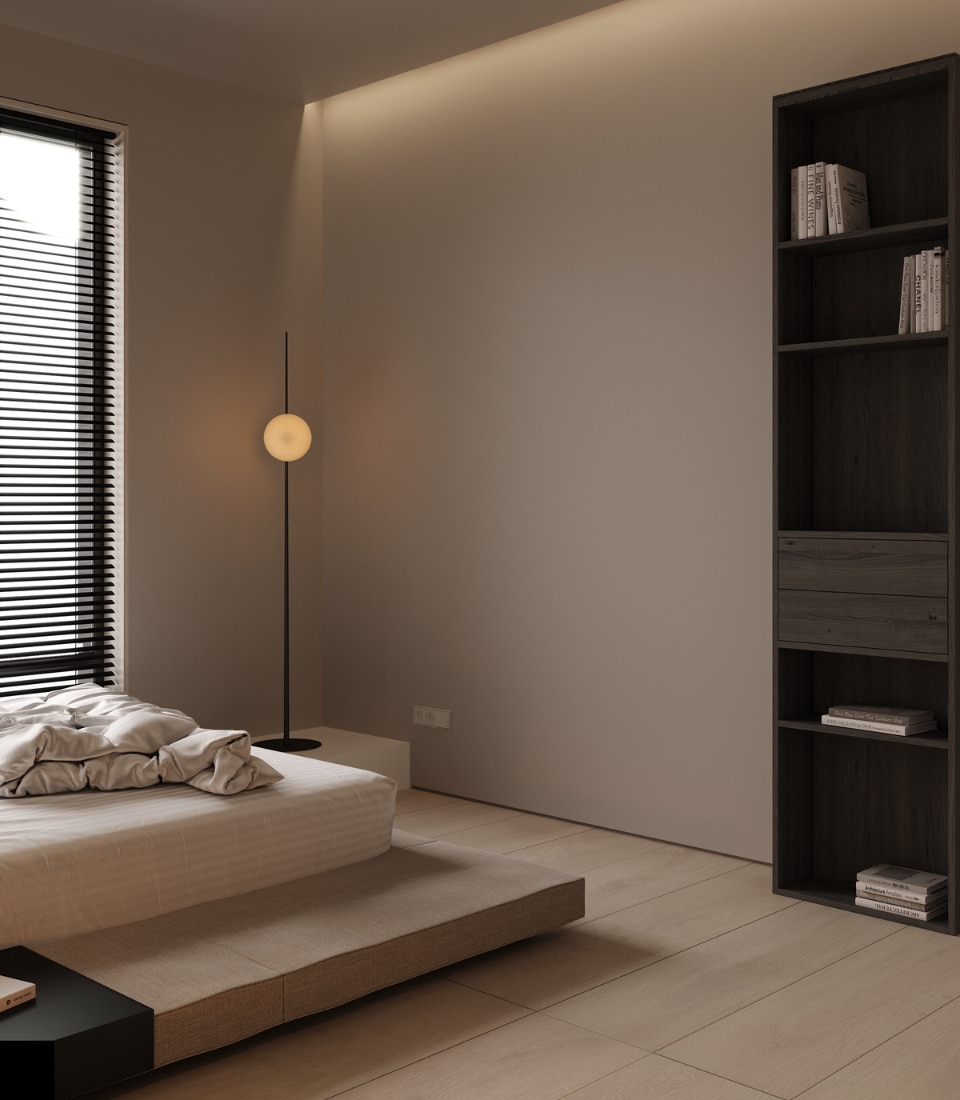
Atmosphere
Let’s close our overview of ideas for home lighting with one of our most original solutions: Karman Zoo, lamps with animals for emotional lighting design. The wall lights that make up this collection and their cute and provocative characters will give a unique personality to any environment.
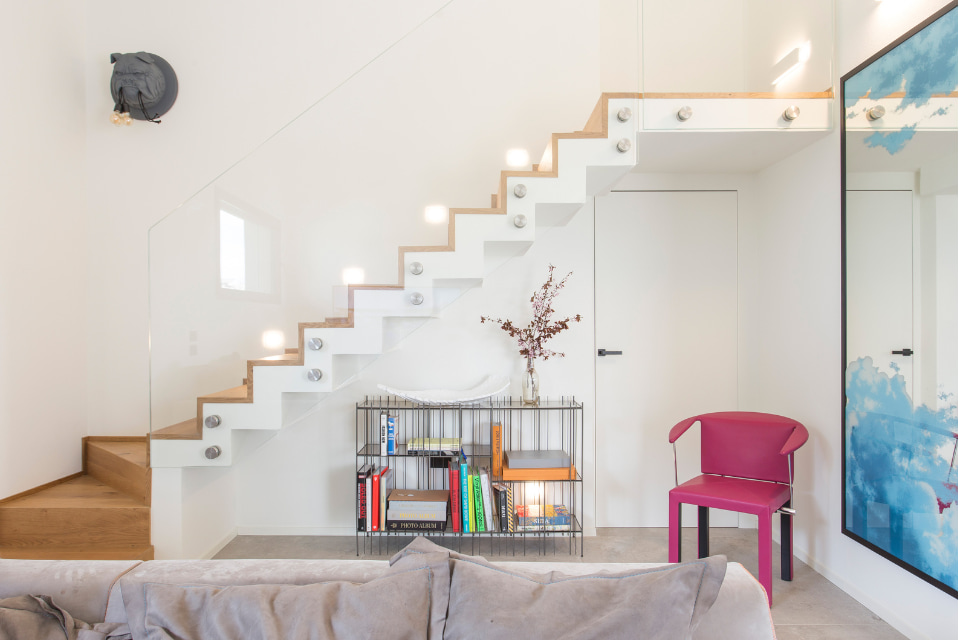
Amsterdam
Interior lighting design: what cannot be missing
From what we have seen in this guide, designing home lighting requires the designer's ability to find the perfect balance between decorative and technical lighting.
Although fundamental, it is not sufficient to select decorative lamps with an attractive design that satisfy your customer’s tastes.
A careful study of the space and sources of natural light are required. It is necessary to have the goal of illumination you want to achieve and the type of atmosphere you want clearly in mind.
Each room in the house, based on its function, has specific lighting needs, and identifying them is the basis of a successful project.
Lighting designers also agree that correct interior lighting design requires a layered lighting project, capable of satisfying ambient, task, and accent lighting.
It is based on the identification of these levels that it will be possible to establish the correct positioning of designer interior lamps.
Finally, as we have seen, the style of the lamps must result in harmony with the overall concept, in the shapes as well as in the choice of materials.




